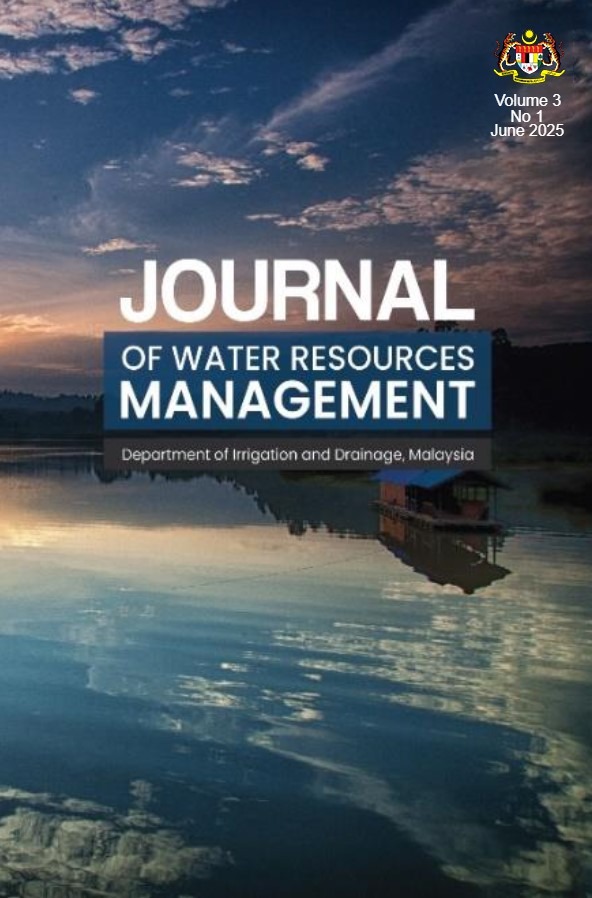Published 10-07-2025
Keywords
- river bifurcation,
- river diversion,
- branching channel,
- computational modelling,
- multiple off-takes
How to Cite
Copyright (c) 2025 Journal of Water Resources Management

This work is licensed under a Creative Commons Attribution-NonCommercial-ShareAlike 4.0 International License.
Abstract
River diversions for flood mitigation purposes are scientifically considered as river bifurcation. The flow mechanism and dynamics of the bifurcated river need to be quantified during design phase of river diversion projects so that the diverted or branched river will serve its purpose when constructed. Computational modelling 3D Navier Stokes equation of FLOW-3D was employed to understand the behaviour of bifurcated river at varying off-take angles. Trapezoidal branching channel was setup with six off-take angles, : 15°, 30°, 45°, 60°, 75° and 90° to investigate the relationship between the discharge ratio, and off-take angle, in branching channels and also, its separation zone in the branch channel. The model was validated by previous laboratory experiment. Three different mesh size were used, Mesh 1 and Mesh 2 converged with 4.77% error, hence Mesh 1 was chosen for the simulations. The findings reveal a notable inverse correlation: as increased, decreased. Additionally, the width of separation, demonstrates variable behaviours with increasing . Within the range of 15° to 45°, both and exhibit an increase. However, for between 60° and 90°, 30°, 45°, 60°, 75° and 90°, decreases, consequently leading to a decrease in . Furthermore, the study examines the length of separation, . It is observed that as increases from 15° to 45°, decreases consistently. However, the results become less predictable as approaches 90°. These findings contribute to a deeper understanding of flow separation dynamics in branching channels and can assist in the design of river diversion.

